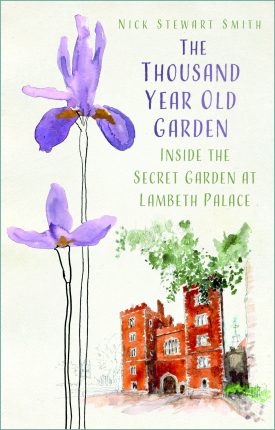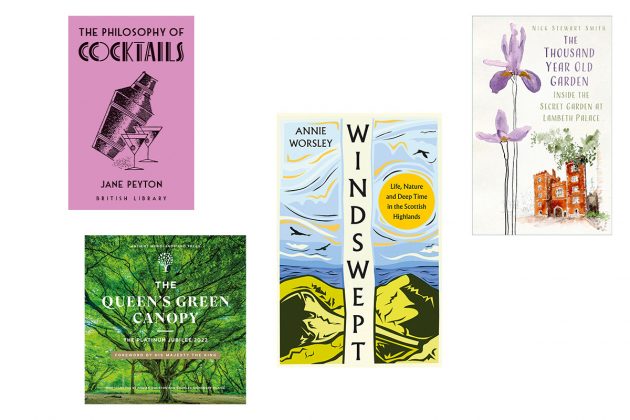The Field rounds up its chosen books to read in October

The Philosophy of Cocktails
By Jane Peyton
There’s an ineffable quality to cocktails – probably because, as Jane Peyton neatly observes, ‘they are the liquid definition of the idiom “greater than the sum of its parts”’. I rarely drink them. Not because I don’t love them but really because they’re a treat, one I associate with subterranean bars in New York or patchily recalled 21sts.
A good cocktail is ‘never just about the liquid itself’, Peyton insists – ‘it is also about the ritual and the transportive nature of the libation that adds a sparkle to how we feel’.
The word ‘cocktail’ was first used in an alcoholic context at the end of the 18th century, and the etymology of the word itself may in fact have equine associations, the less scatological of the theories being that mixed-breed horses’ tails were docked into the shape of a cockerel’s tail. Peyton’s book is full of such detail, and she takes us on a captivating tour of the history and cultural development of cocktails that is scholarly in its research but never anything less than page-turning in its style. Make mine a Negroni.
Reviewed by Ettie Neil Gallacher

Windswept
By Annie Worsley
I developed acute lifestyle envy after perusing this. Well, lifestyle and disposition envy, because I’m not sure I have the psychological reserves to decamp to the wildest reaches of the Scottish Highlands and become a crofter. Annie Worsley forsook her career in academia to do just that.
Worsley’s book is divided according to the equinoxes and solstices. This primal organisation is rather fitting for a book about so primordial a lifestyle: ‘Coast and people are conjoined to sea and mountains elementally, historically, physically and emotionally. We occupy a charged space, an edgeland, rich in biodiversity and full of character. This place churns with energy, we are pulled this way and that by the magnetic lure of some of the most dramatic mountain landscapes in Europe, by the deep, pulsing, charismatic and ever-changing stretch of sea and by the wrinkled horizon of distant islands.’
Worsley’s writing is so lyrical that this sometimes feels like prose poetry, so rich it is in figurative language and natural rhythm. One not to miss.
Reviewed by Ettie Neil Gallacher
The Queen’s Green Canopy
By Adrian Houston and Charles Sainsbury-Plaice
As part of the Platinum Jubilee celebrations for HM Queen Elizabeth II, a nationwide tree-planting initiative was launched. The Queen’s Green Canopy encouraged people to ‘plant a tree for the Jubilee’. After the death of his mother, HM The King extended the project until March 2023. The result is ‘a living legacy’ of some three million trees.
In a foreword, His Majesty writes of how fitting a tribute this ‘Treebilee’ was for his mother: ‘The enduring and reassuring presence [of trees]… made them a particularly appropriate way of commemorating the 70-year reign of our late Queen, whose life touched countless people over many generations and across the world.’
The book contains splendid photographs of 140 trees and woodlands dedicated to Her Late Majesty, alongside expert advice and contributions from supporters of the project. This is a sumptuous and moving tribute to the late Queen and one that will continue to benefit and delight us all for centuries.
Reviewed by Ettie Neil Gallacher

The Thousand Year Old Garden
By Nick Stewart Smith
It’s an extraordinary thought that Richard the Lionheart, the legendary crusader, was on the throne when Lambeth Palace garden officially came into existence in 1197. Given the upheaval that London has seen in the intervening centuries, it’s remarkable that this 10-acre site has somehow defied the developers’ clutches.
But in fact the garden may well be even older than this. Head gardener Nick Stewart Smith argues that there was a garden on this site, tended to by Benedictine monks, for at least 100 years before Archbishop Baldwin ordered the construction of what would become the residence of the Archbishop of Canterbury henceforth.
Stewart Smith professes not to be a writer but his easy, conversational style married with an extraordinary eye for horticultural, historical and even personal detail belies this. Readers will have their interest piqued by this captivating work, and can visit the garden to see for themselves (though Lambeth Palace itself is closed for refurbishment).
Reviewed by Ettie Neil Gallacher










